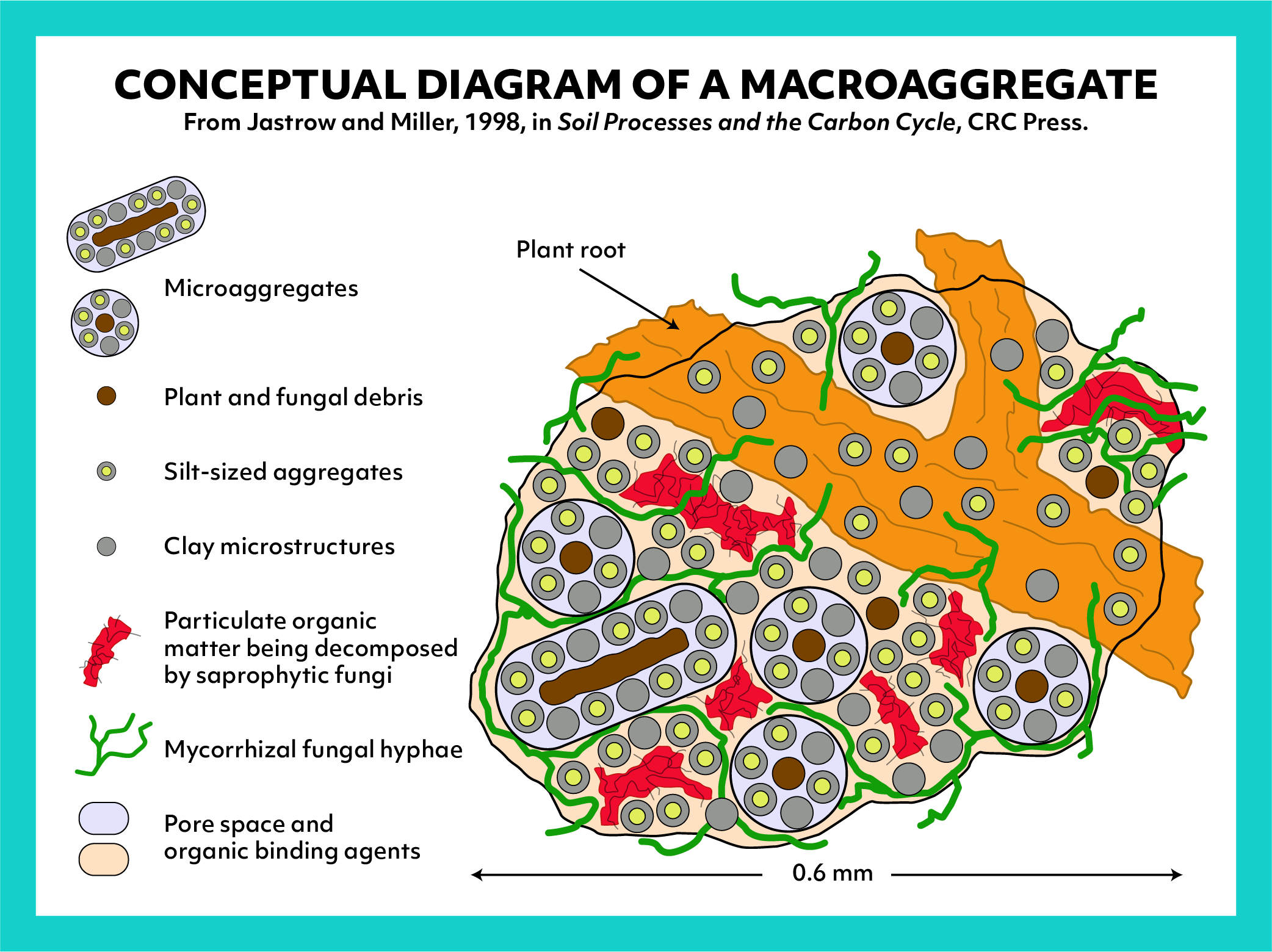Have you ever picked up a handful of soil and watched it break apart into tiny pieces? If so, you were looking at aggregates—groups of various sized soil particles that bind to each other more strongly than to adjacent particles.
While there are numerous ways to evaluate soil health, aggregates are primary factors. These collections of soil components are made of sand, silt, clay and other organic material, and they play a major role in soil structure formation and stability.
 Aggregates are broken down into two categories based on function—micro and macroaggregates. Microaggregates are extremely small components of macroaggregates pulled together by physical-chemical bonds. Microbial glue holds together the primary soil particles of microaggregates. These tiny forces of nature make macroaggregates highly stable.
Aggregates are broken down into two categories based on function—micro and macroaggregates. Microaggregates are extremely small components of macroaggregates pulled together by physical-chemical bonds. Microbial glue holds together the primary soil particles of microaggregates. These tiny forces of nature make macroaggregates highly stable.
“While microaggregates are small, their counterparts can be seen with the naked eye and range in size from 0.25 to 8 mm, or about the size of a small marble,” says Dr. Abbey Wick, Soil Health Extension Specialist and Assistant Professor of Soil Health at North Dakota State University. “Macroaggregates form from organic debris and are the soil groups referred to as aggregates.”
Aggregate formation and stability depend on soil health practices. Tilling breaks apart macroaggregates, limiting their formation and leaving behind tiny soil particles. This creates tight pore spaces and leaves little room for water to infiltrate soil.
On the other hand, no-till systems reduce soil disturbance and enhance macroaggregate formation. No-till systems reduce soil erosion as do aggregates, which play a major part in controlling it. Eliminating tillage allows aggregates to grow in size and lengthens breakdown time, providing a long-term source of organic matter for roots, bacteria and fungi.
“When macroaggregates persist in soil for longer periods of time, microaggregate populations increase within macroaggregates,” says Dr. Wick. “As long as soil is not disturbed, aggregates stabilize to create a long-term form of carbon storage in the soil.”
Due to the reduced soil disturbance in no-till systems, the organic matter of aggregates eventually becomes complex and decomposition becomes difficult for microbes, reducing microbial activity. At this point, aggregates break apart, releasing organic material and microaggregates into the soil, starting the aggregate formation cycle again.
“The goal is to let aggregates run their course and turn over naturally rather than shortening the stabilization period through tillage,” says Dr. Wick. “Reducing soil disturbance creates microaggregate development within macroaggregates, proving long-term carbon and organic matter storage.”
When aggregates break down on their own, they release organic matter into the soil. For example, pieces of dead hyphae that break apart are later used as substrates. Fungal hyphae are one of the most important stabilizers for soil aggregates.
Just as microaggregates are held together by microbial glue, macroaggregates are held together by fungal hyphae, which stimulate important biological activity around the root zone. Fungal hyphae and fine roots are key to reducing erosion, physically protecting aggregates and keeping soil where it belongs—in your field.
Wet and dry cycles also influence stabilization. When soil gets wet and then dry, soil particles arrange themselves more closely, creating stronger bonds and increasing stability. Once aggregates stabilize, microbes eat some of the organic matter. This eventually renders aggregates stagnant and leads to disintegration, bringing soil back to the natural aggregate formation cycle.
Soil aggregation is an essential part of any healthy soil system. Increasing aggregate formation and stability has the potential to enhance your crop production and soil health.




 and then
and then